
Czech Republic - diesel locomotives and multiple units of České dráhy
For a full scale picture, please click on the picture shown !
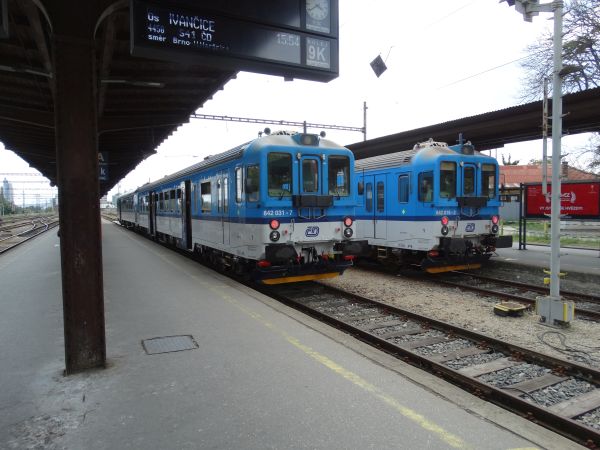
Two České dráhy railbuses of the class 842, both with a driver's cab coach. These trains are called "Kvatro" (Quattro) and they were
made by Vagónka Studénka (currently Škoda) 1988-1994. They are still used on non-electrified side lines. The 37 railcars of Class 842
were built by Moravskoslezská vagónka in 1988 (001 and 002) and between 1993 and 1994 by Vagónka Studénka(003 to 037) as Class M 273.2,
and modernised with new engines by Pars nova between 2010 and 2013.
Picture from Brno station 14.7.2018 by Ilkka Siissalo.
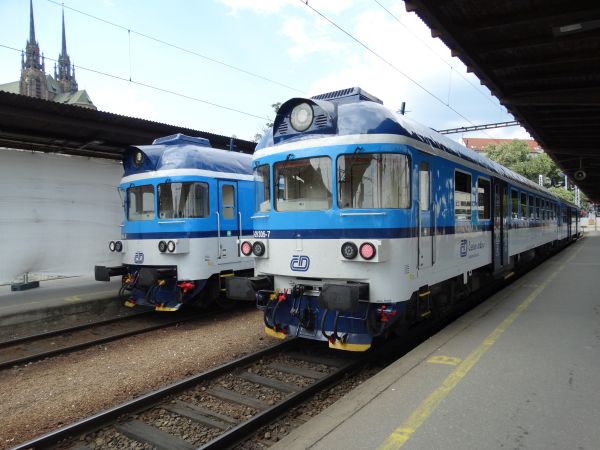
These are the other ends of the same trains as in the picture above. These are driving trailers (driver's cab coaches) of the class 794.
They are the result of modifications of class Postw postal coaches (200 were built between the years 1984 and 1985 by Vagónka Studénka),
which was carried out by Pars nova between 2006 and 2007. (source: Flickr, "The STB").
Picture from Brno station 14.7.2018 by Ilkka Siissalo.
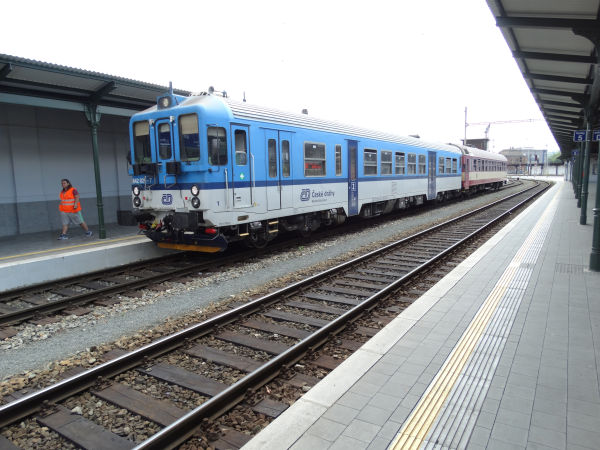
Class 842 railbuses do not always have suitable driving trailer coaches available and then any available old express coach will do.
Picture from Brno station 14.7.2018 by Ilkka Siissalo.
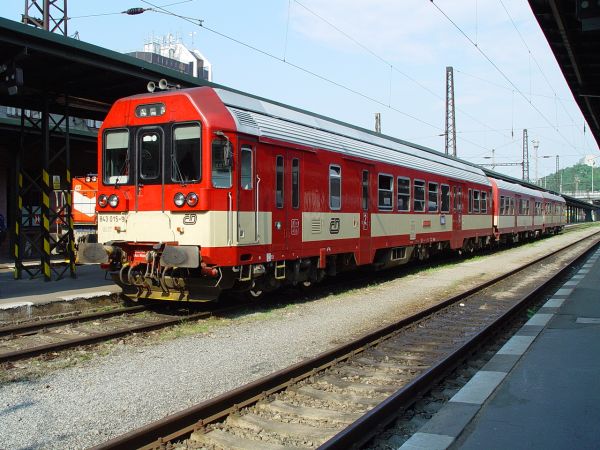
A class 843 diesel multiple unit. The class 843 trains were nicknamed "Rakev" (=coffin). They were built by Vagónka Studénka
1995 to 1997 as a successor to the class 842 shown above.
Picture from Praha-Masarykovo 1.6.2003 by Ilkka Siissalo.
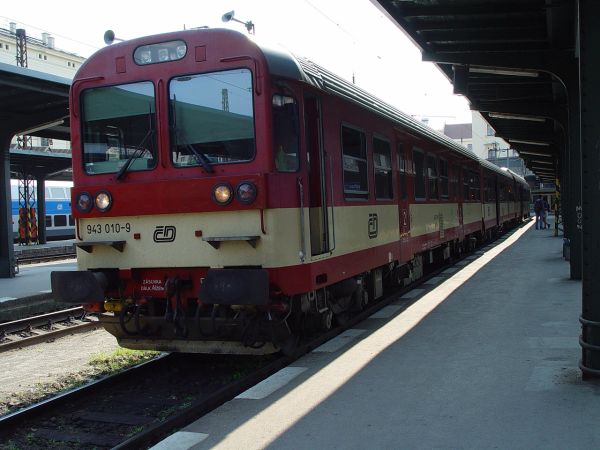
The other end of a class 843 train. Class 943 is the unmotorised driving trailer of a typical combination.
Picture from Praha-Masarykovo 1.6.2003 by Ilkka Siissalo.
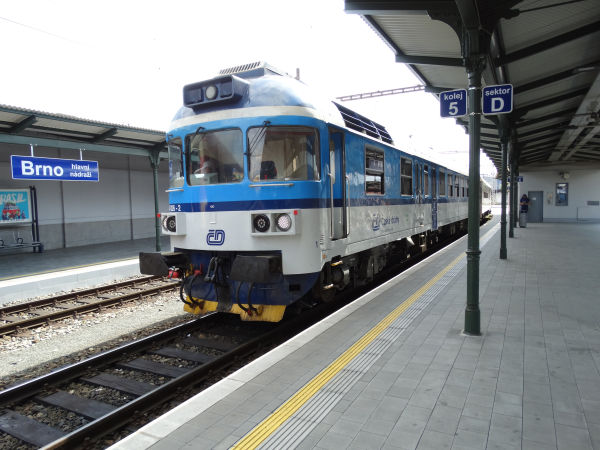
Another Class 842 railbus being pushed a freshly painted class 794 driving trailer first into the Brno main station.
Picture from Brno station 14.7.2018 by Ilkka Siissalo.
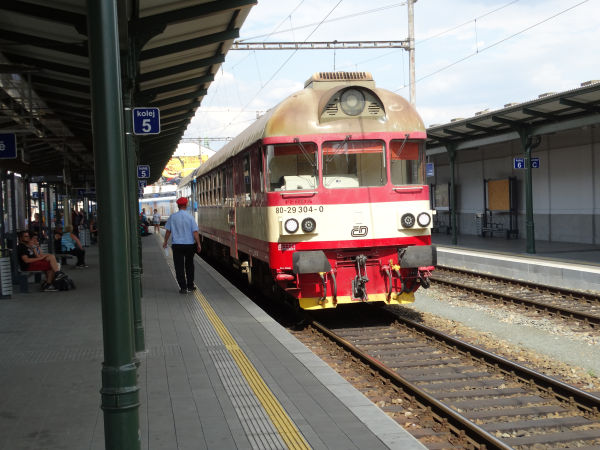
A very similar class 794 driving trailer, but this one has not yet been refurbished and repainted.
Picture from Brno station 14.7.2018 by Ilkka Siissalo.
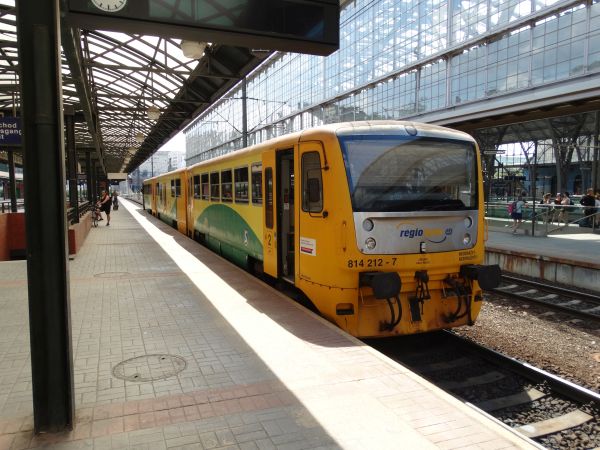
A class 814.2 "Regionova" three coach diesel railbus. These have originally been two coach trains, but some have received a new
low-floor middle wagon. These trains are built 1973 to 1984 as class 810 (which looks VERY different from the present looks)
and rebuilt in their current state in 2005 to 2011. 26 of these three coach trains have been built and they are used on small and
silent branch lines. It has a power rating of 484 kW and a top speed of 80 km/h.
Picture from Praha hlavní nádraží (Prague main station) 15.7.2018 by Ilkka Siissalo.
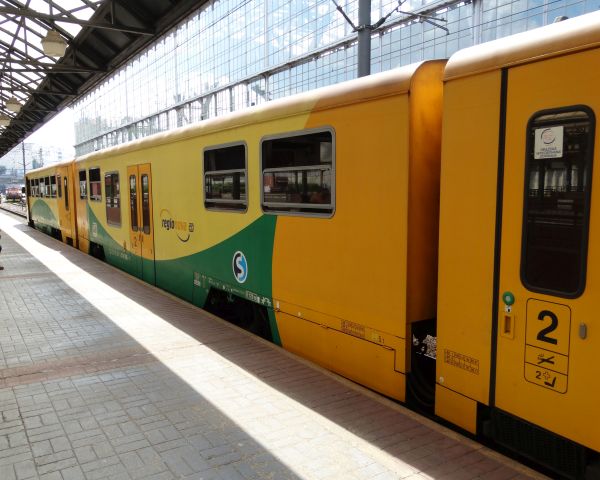
Another view of the same three coach "Regionova" railbus as in the picture above, now showing the partly low-floor middle coach
more clearly.
Picture from Praha hlavní nádraží (Prague main station) 15.7.2018 by Ilkka Siissalo.
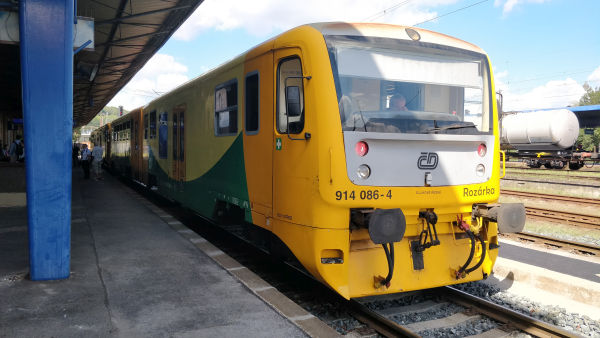
Class 814.2 "Regionova" railbuses were totally rebuilt from one class 809/810 motorised railbus plus two unmotorised wagons.
This wagon of the class 914 is one of those unmotorised bywagons, but this one has a steering cab, the middle coach has not.
Nowadays the class 814/914 trains are a fixed three coach bundle.
Picture from the station of Kutna Hora 3.9.2020 by Markku Salo.

A class 809 small railbus, repainted, but otherwise in its original looks. Class 809 railbuses are those of class 810, but
modernised during 1994-97. The original class 810 dates back to 1973-82.
Picture from the station of Roudnice nad Labem 5.9.2020 by Markku Salo.
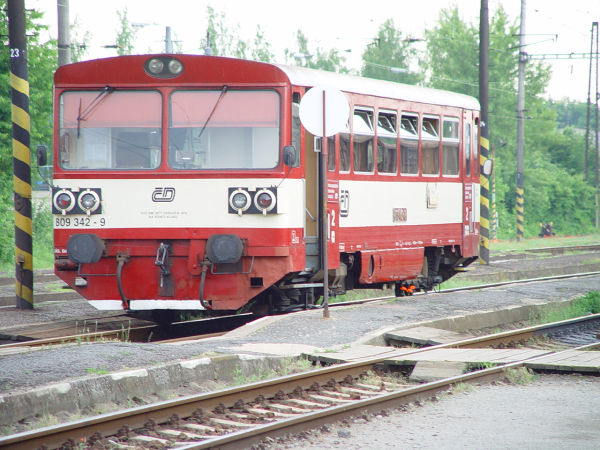
This is how those same class 809 railbuses used to look like in their previous painting scheme.
Picture from the station of Čelákovice 1.6.2003 by Ilkka Siissalo.
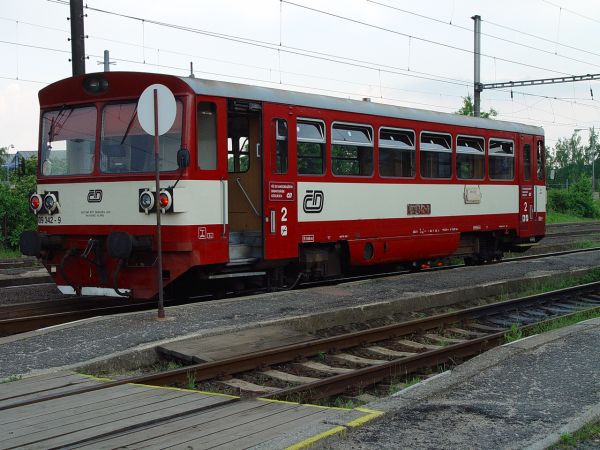
The same class 809 railbus as seen above.
Picture from Čelákovice 1.6.2003 by Ilkka Siissalo.

This is still one of the original class 810 railbuses from 1973-82, one which was not modernised in the 1990s,
but which apparently quite recently has been refreshed and repainted. It is now named as "regioMouse" in reference
of course to the big doubledecker "CityElefant" trains used around the city of Prague.
Picture from the station of Kutna Hora 3.9.2020 by Markku Salo.
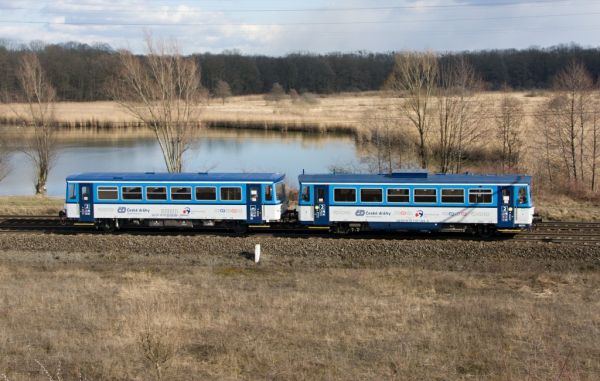
Fourteen trains of the classes 810/809 underwent yet another thorough modernisation towards the end of the year 2020. After
modernisation they are now called class 811. The biggest improvements relate to passenger comfort. The trains are now
fully airconditioned, they have well working wlan connections, new and comfortable seats and USB sockets for reloading a
passenger's mobile phone. The number of seats per wagon dropped from 55 to 45 because the more comfortable seats take by
far more space.
Here we see one of the renovated trains, now class 811. Here the train is running on the Ostrava-Svinov to Polanka nad Odrou
Vyhybna, seen here near Ostrava. Picture 6.3.2021 by Petr Štefek.
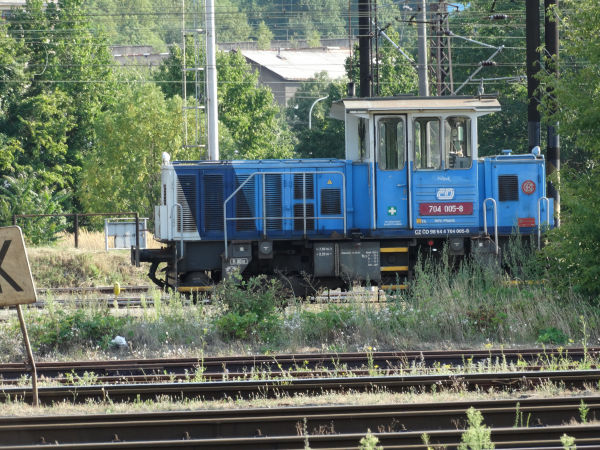
Class 704 no.005 diesel shunter locomotive "Filipek". These small shunters were built 1988-1992 in three series based on a prototype from the 1970s.
22 machines in total were built in 3 series. This one is from 1992. It has a power rating of only 220 kW and a top speed of 60 km/h and it is intended
for only light shunting at stations. It is 6 metres long and weigs 28 tons.
Picture from the station of Usti nad Labem 15.7.2018 by Ilkka Siissalo.

A class 730 diesel switcher. They were built 1978 to 1989. Its nickname is "Ponorka" (=submarine).
Picture from the fiddle yards of Nymburk 1.6.2003 by Ilkka Siissalo.

Three unmotorised old railbus coaches of the class Btx763, also known as 50 54 28-28 according to their UIC numbers. These coaches were built
1958-1969 by ŽOS Nymburk and they were intended for use with motorised railbuses of for example class 842. But in many slow local trains they are hauled
by small diesel or electric locomotives as normal coaches. This was the case here as well.
Picture from Praha Masarykovo station 25.5.2012 by Ilkka Siissalo.
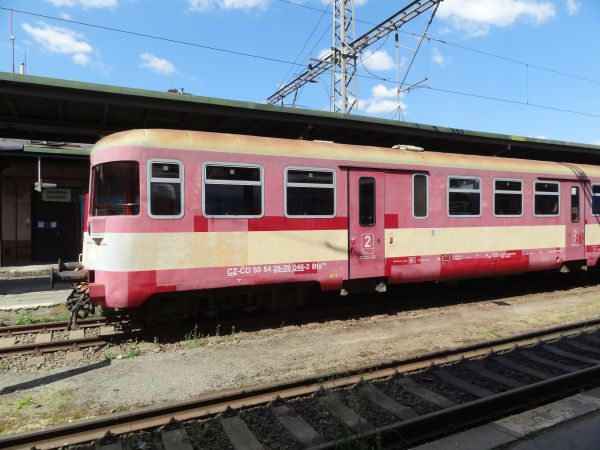
Side view of the same class Btx763 coach as above.
Picture from Praha Masarykovo station 25.5.2012 by Ilkka Siissalo.
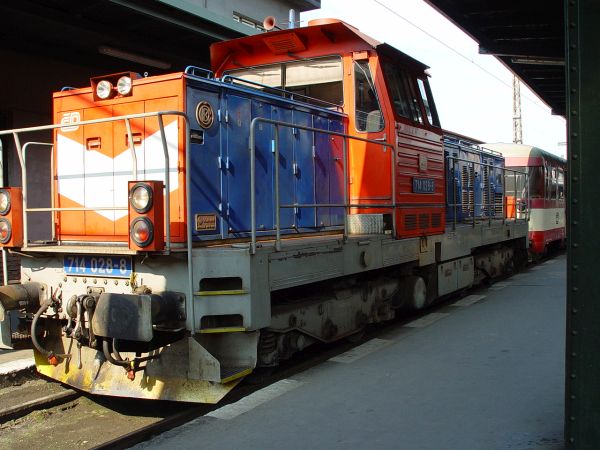
A class 714 diesel. They were built 1994 to 1997 and they are used both as swichers as well as in line duties, for example here
hauling old passenger coaches. This one had been built in 1995. The nickname of this model is "Dvojlego" (two Lego blocks).
Picture from Praha Masarykovo station 1.6.2003 by Ilkka Siissalo.
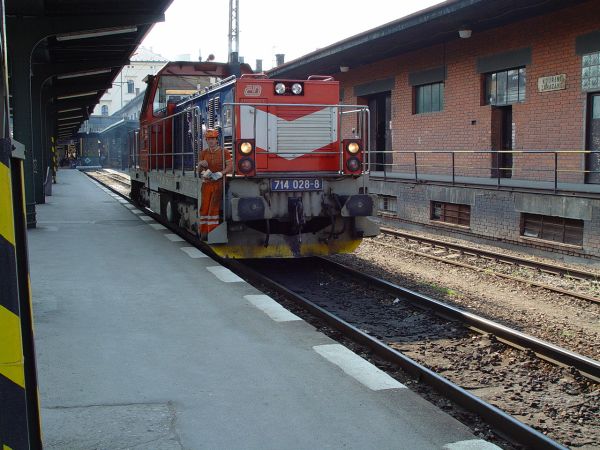
The same class 714 diesel seen from the other side.
Picture from Praha Masarykovo station 1.6.2003 by Ilkka Siissalo.
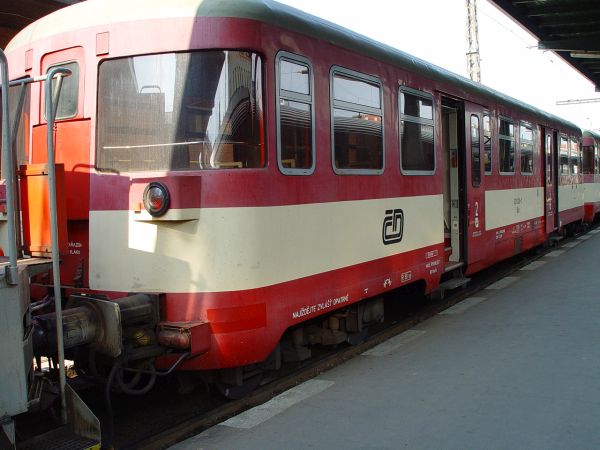
Old, unmotorised diesel railbus coaches of the type Btx 763. Two of these were the ones that were being hauled as a regional train
by the class 714 diesel shown above.
Picture from Praha Masarykovo station 1.6.2003 by Ilkka Siissalo.
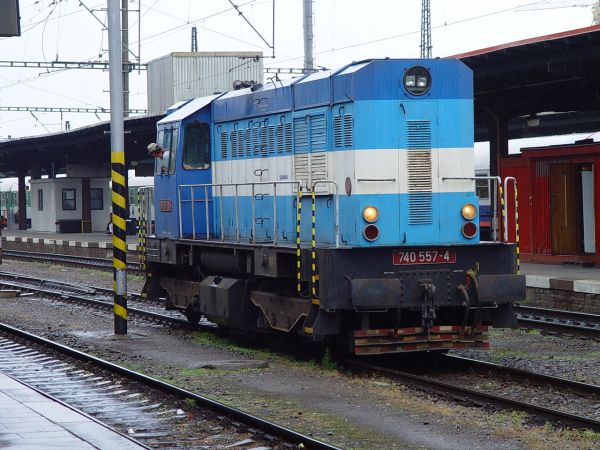
Czech state railways class 740 is the same as communist-era ČSD Class T 448.0, a four axle diesel for shunting and local cargo
duties. They were built by ČKD (Českomoravská Kolben-Daněk) 1973-89. A total of 620 machines were built and theywere sold also to Poland,
Cuba and North Korea. It has a modest power output of 883 kW and a maximum speed of 70 km/h.
Picture from Kolin 1.6.2003 by Ilkka Siissalo.
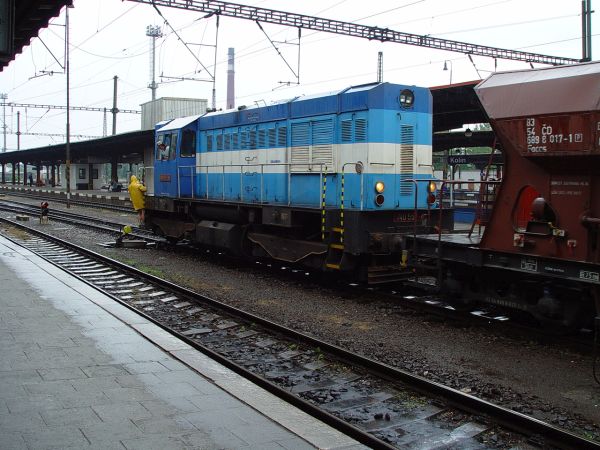
Another picture of the same class 740 shunter as it was performing shunting duties at the station of Kolin.
Picture from Kolin 1.6.2003 by Ilkka Siissalo.
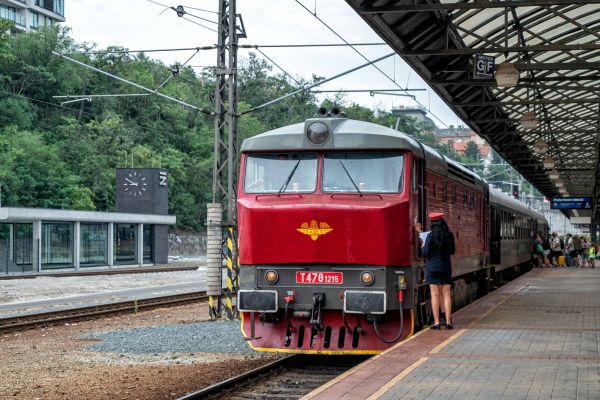
This old diesel of the class T478, seen here retropainted in its old, communist-time livery, used to be called "Bardotka". The name refers to
the famous French movie star Brigitte Bardot and her big tits and the form of the locomotive's front :-) These machines were new at the time
when Bardot was a top star.
Picture from Praha hlavní nádraží (Prague main station) 14.8.2022 by Josef Horáček.
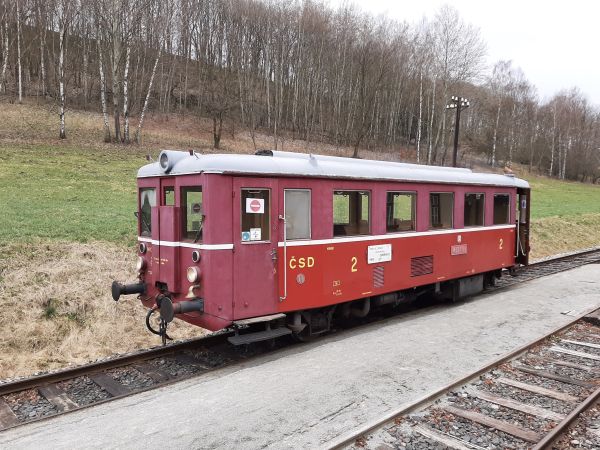
Old railbus M131 109 is kept as a museum train in the colours and markings of the former Czechoslovakian state railways ČSD. These railbuses
were built by Tatra Kopřivnice and Vagónka Tatra Studénka-Butovice 1949 to 1956. Its top speed was 60 km/h. It is lovingly nicknamed as
"Hurvinek", which is a famous puppet with red cheeks. Here the Hurvinek makes touristic museum train runs between Usti nad Labem and
Zubrnice.
Picture from Zubrnice 2.4.2021 by Michal Makalouš.

